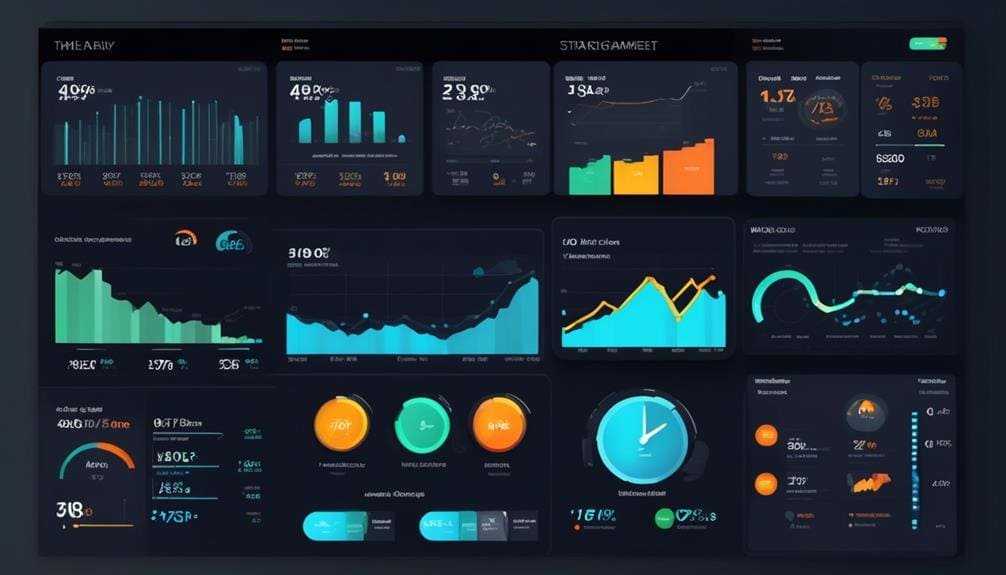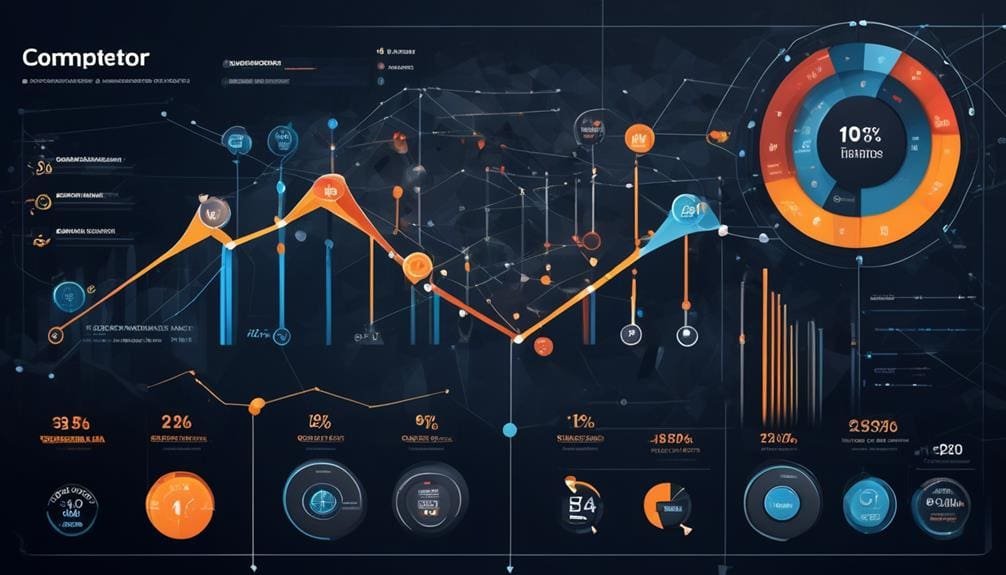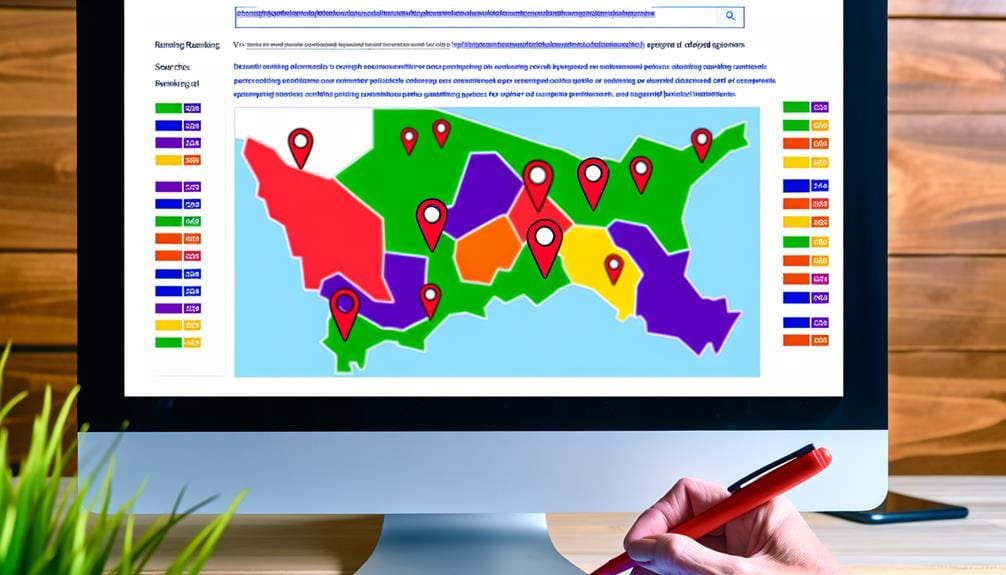8 Strategies for Digital Market Competitor Insights
January 17, 2024 | by Jacob Cavazos

In the fast-paced world of digital marketing, understanding your competitors' strategies is like having a crystal ball into the future of your own success. We've all been there, wondering how to stay one step ahead in the game. But fear not, because we've uncovered eight innovative strategies for gaining valuable insights into your digital market competitors. From dissecting their target audiences to unraveling their traffic acquisition tactics, these strategies are the key to unlocking a competitive edge in the ever-evolving digital landscape. But the real game-changer? It's all about aligning these insights with your own strategy to drive unparalleled success. So, if you're ready to take your digital marketing game to the next level, buckle up because we're about to embark on a journey that will transform the way you approach competitor analysis.
Understanding Competitor Types
Understanding competitor types in digital marketing is crucial for developing effective competitor analysis strategies. In the realm of digital marketing, it's essential to differentiate between direct competitors, indirect competitors, and brand competitors. Direct competitors are those offering similar products or services, often targeting the same customer base. Indirect competitors may not offer the same products or services but compete for the same customer budget. Brand competitors are those with a similar brand positioning and target audience, even if their products or services differ. Distinguishing these types is vital as their strategies and impact on the market differ significantly. For example, analyzing direct competitors can provide insights into specific product features or pricing strategies, while understanding brand competitors can shed light on broader market positioning and messaging. This deeper understanding enables us to tailor our competitive analysis in digital marketing to address the unique challenges and opportunities posed by each competitor type, ultimately leading to more effective strategies and content.
Identifying Competitor Target Audiences
Distinguishing competitor types in digital marketing provides a foundation for identifying their target audiences and understanding their impact on the market. By delving into competitive analysis for digital, we can glean valuable insights that guide our strategies and improve our competitive edge. Here are some essential steps to pinpoint competitor target audiences:
- Analyze Demographics: Understanding the demographics of top credit card companies reveals valuable insights, such as the age and gender of their primary audience. This information can provide crucial guidance for targeting specific demographics in our own marketing efforts.
- Identify Overlaps: Discovering audience overlaps between competitors, as seen with Discover.com and Chase.com, can uncover shared target audiences. This knowledge can inform strategies aimed at capturing a larger market share.
- Track Growth Metrics: Monitoring the growth metrics of competitors like Americanexpress.com and Capitalone.com provides a clearer understanding of shifts in target audiences and market trends. These insights can help us adapt and refine our strategies to stay ahead in the digital marketing competitive landscape.
In the realm of digital marketing, understanding competitor target audiences is a game-changer, allowing us to fine-tune our approach and capitalize on opportunities for growth.
Analyzing Market Landscape Activity

Regularly analyzing competitor activity across the market landscape is essential for gaining valuable insights and staying ahead in the competitive digital marketing landscape. By conducting thorough competitor research and analysis in digital marketing, we can uncover crucial information about our rivals' strategies, tactics, and performance. To provide a clear understanding of the significance of analyzing market landscape activity, let's delve into a comprehensive comparison of various aspects of competitive intelligence.
| Competitive Analysis Framework | Utilizing Competitive Analysis Insights |
|---|---|
| Helps in understanding the competitive landscape comprehensively | Refines our digital marketing strategy |
| Identifies threats and opportunities for our strategy | Improves our own strategy based on insights gained |
| Encompasses PPC, SEO, and social media analysis | Provides a holistic view of the competitive landscape |
Unpacking Traffic Acquisition Strategies
As we explore the intricate web of digital market competitor insights, we must unravel the strategies behind traffic acquisition. Our focus will be on understanding the organic traffic sources, dissecting the paid acquisition channels, and analyzing the traffic optimization techniques employed by our competitors. By examining these points, we aim to gain valuable insights that will inform our own marketing strategies and keep us ahead in the ever-evolving digital landscape.
Organic Traffic Sources
Understanding the organic traffic sources utilized by competitors is crucial for gaining valuable insights into their visitor acquisition strategies and optimizing our own website's visibility. When analyzing competitors' website, we focus on the following organic traffic sources:
- Organic Search: Examining the keywords driving organic traffic to competitors' sites provides insights into popular search terms and content preferences.
- Social Media: Identifying which social platforms drive the most traffic helps tailor our social media strategy and engage with the target audience effectively.
- Referral Traffic: Understanding where competitors' referral traffic originates from allows us to explore potential partnership opportunities and enhance our backlink strategy.
Paid Acquisition Channels
Analyzing the performance of competitors' paid acquisition channels provides invaluable insights into effective digital marketing strategies and campaign optimization. Understanding the intricacies of paid search, competitors' PPC efforts, and other paid acquisition channels is crucial for mastering traffic acquisition. By dissecting competitors' paid social, referral, and other paid channels, marketers can gain valuable intelligence on what works and what doesn't in the realm of paid acquisition. This insight enables the optimization of our own paid marketing strategies and the allocation of resources to the most effective channels. Leveraging competitor insights on paid acquisition channels empowers us to make data-driven decisions, refine our targeting, and enhance the overall effectiveness of our digital marketing efforts. It's about staying ahead of the curve and continuously refining our strategies based on real-time competitor data.
Traffic Optimization Techniques
Unpacking Traffic Acquisition Strategies reveals the essential tactics and tools for optimizing website traffic and engaging our target audience, building on our insights into competitors' paid acquisition channels. To effectively compete and excel in the digital market, we must employ innovative traffic optimization techniques. Leveraging SEO and SEM strategies is crucial for improving website rankings and increasing visibility. Content marketing plays a pivotal role in attracting organic traffic and fostering meaningful engagement with our audience. Additionally, social media marketing is instrumental in driving traffic and enhancing brand visibility, while paid advertising techniques such as PPC and display ads enable us to target potential customers effectively. By analyzing and implementing these traffic optimization techniques, we can gain a competitive edge and achieve sustained success in the digital landscape.
Reviewing Campaign and Promo Activity
By reviewing the campaign and promo activity of our competitors, we gain valuable insights into their promotional strategies and their impact on customer engagement. Analyzing competitor activity related to campaigns and promotions is essential for honing our digital marketing strategy. It allows us to understand the effectiveness of different marketing channels and seasonal trends, enabling us to refine our own promotional efforts. Furthermore, examining competitors' promo performance over time can reveal shifts in customer interest and market dynamics, helping us stay ahead in the digital marketing landscape.
In addition, understanding our competitors' ongoing campaigns and promotions provides us with the opportunity to adapt and optimize our own marketing offers and positioning. By closely monitoring competitors' social media presence and their promotional activities, we can gain a deeper understanding of the latest industry trends and consumer preferences, which is crucial for maintaining a competitive edge in the market.
Setting Up Ongoing Competition Tracking

As we delve into the topic of ongoing competition tracking, we'll explore the selection of tracking tools, methods for data collection, and the approach to continuous analysis. By utilizing advanced tracking tools like Semrush's EyeOn and setting up email alerts, we can stay ahead of competitor activities. Embracing a continuous analysis approach allows us to leverage competitor insights for refining and optimizing our own marketing strategy.
Tracking Tools Selection
Selecting the right tracking tools tailored to our specific needs and digital marketing channels is essential for setting up ongoing competition tracking and gaining valuable insights into our competitors' activities and trends. When choosing tracking tools, it's crucial to consider our specific digital marketing analysis requirements and the channels we want to monitor for competitors' traffic and competitive research. Additionally, we can explore tools like Semrush's EyeOn, which offers 24/7 monitoring of competitors and provides email alerts for updates, ensuring we stay informed about our competitors' activities. Moreover, leveraging tracking tools enables us to gain insights into competitor activity and trends across various categories, allowing us to identify threats and opportunities for our own digital marketing strategy.
Data Collection Methods
Tracking our competitors' activities through data collection methods is essential for gaining valuable insights and refining our digital marketing strategy. Utilize Semrush's EyeOn tool for 24/7 competitor tracking, and set up email alerts to receive updates on competitor activity. Leveraging the Overview report provides crucial insights into competitor trends, enabling us to identify threats and opportunities. Continuous competition tracking is crucial for refining our own strategy, allowing us to stay ahead in the competitive digital marketing landscape. By employing these data collection methods, we can conduct a comprehensive SWOT analysis to understand our competitive positioning and make informed decisions. Stay proactive and informed about our digital marketing competitors to drive our strategic initiatives and maintain a competitive edge.
Continuous Analysis Approach
Implementing a continuous analysis approach for ongoing competition tracking is essential for maintaining a competitive edge in the dynamic digital marketing landscape. To achieve this, we can utilize tools like Semrush's EyeOn for 24/7 competitor tracking and receive email alerts for updates on their activities. Leveraging the overview report allows us to monitor competitor trends and activities across various categories. This ongoing competition tracking enables the identification of potential threats and opportunities for our own digital marketing strategy. Making ongoing competitor analysis an integral part of our digital marketing strategy ensures that we stay updated on competitors' changes and developments, allowing us to adapt and innovate our own strategies effectively.
Aligning Competitor Data With Your Strategy

To gain a competitive edge in the digital market, it is essential to leverage digital analytics tools for aligning competitor data with our strategy. By identifying and understanding competitor activity and strategies, we can inform and optimize our own approach. Setting up ongoing competition tracking using tools like Semrush's EyeOn for 24/7 competitor monitoring allows us to stay updated on the latest movements in the market. Additionally, utilizing competitive analysis frameworks such as SWOT or Porter's Five Forces provides valuable insights into the strengths, weaknesses, opportunities, and threats present in the digital marketing landscape.
| Competitor Analysis | Digital Marketing | Insights |
|---|---|---|
| Identify competitor activity and strategies | Optimize our own approach | Informed decision-making |
| Ongoing competition tracking | Market monitoring | Real-time adjustments |
| SWOT & Porter's Five Forces frameworks | Strategic insights | Competitive advantage |
| Refine digital marketing strategy | Improve ROI | Adapt to market changes |
Utilizing Competitive Analysis Framework
Leveraging competitor data in our strategy has paved the way for an insightful approach to utilizing competitive analysis frameworks in the digital market. By harnessing these frameworks, we can gain a comprehensive understanding of our position in the competitive landscape and identify opportunities for growth and improvement. Here are three key strategies for effectively utilizing competitive analysis frameworks:
- Identifying Key Competitors: Utilizing competitive analysis frameworks allows us to identify and prioritize key competitors in the digital market. By assessing their strengths, weaknesses, and strategies, we can gain valuable insights into our own competitive positioning.
- Analyzing Market Trends: Competitive analysis frameworks enable us to analyze market trends and shifts, empowering us to adapt our strategies to changing market dynamics. By staying ahead of industry trends, we can capitalize on emerging opportunities and mitigate potential threats.
- Benchmarking Performance: Through competitive analysis frameworks, we can benchmark our performance against key competitors, identifying areas where we excel and areas that require improvement. This data-driven approach allows us to set realistic goals and strategies for outperforming our competitors.
Incorporating competitive analysis frameworks into our digital marketing strategy empowers us to make informed decisions, optimize our performance, and stay ahead of the competition.
Frequently Asked Questions
How to Do a Competitor Analysis in Digital Marketing?
In analyzing the competitive landscape in digital marketing, we gather insights on online presence and market positioning. By utilizing tools like Similarweb, we validate website traffic, core keywords, and other pertinent data.
What Are the 8 Digital Marketing Strategies?
We passionately pursue powerful social media, captivating content marketing, and engaging email campaigns. These strategies drive our digital marketing success, elevating our brand and connecting with our audience in meaningful ways.
What Are 3 Digital Marketing Strategies?
We target our audience with compelling content creation that aligns with our brand positioning. Our strategy involves leveraging SEO, paid advertising, and social media to drive targeted traffic and engage with our audience effectively.
What Are the Four Digital Marketing Strategies?
We focus on content optimization, customer engagement, and conversion tracking to refine our digital marketing strategies. These tactics provide valuable insights into the competitive landscape, helping us stay ahead in the digital market.
RELATED POSTS
View all



